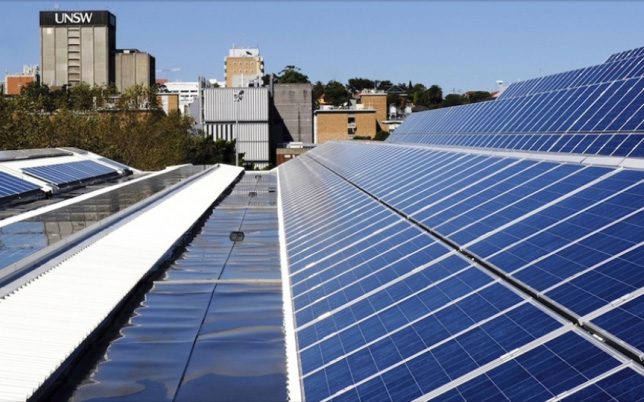Summary
The project will explore cost and environmental limitations, opportunities using Life Cycle Analysis (LCA), and undertake yield modelling and Levelised Cost of Energy (LCOE) modelling for a range of key photovoltaic (PV) system materials including polysilicon, glass, aluminium, copper, steel, and concrete.
Need
This project is funded under the ULCS PV Research and Development Round and will build on ARENA’s previous investment into solar PV that support projects aligning with ARENA’s ‘Solar 30 30 30’ target to improve module efficiency to 30 per cent and reduce total construction costs of utility-scale solar farms to 30 cents per watt by 2030. Funding is being made available to focus on commercialisation prospects, which will take place after an initial R&D phase, to assist in getting the new technologies into the market.
Reaching terawatt (TW) scale PV will increase demand for the associated construction materials potentially leading to supply-chain risks for metals and other raw materials, which may negatively impact the LCOE and the environmental outcomes. A 2020 report from the World Bank estimated that more than 100 Mt of metals would be required for solar PV under the International Energy Agency’s (IEA) 2-degree scenario, or up to 200 Mt under the IEA’s Renewable Energy Roadmap scenario, which estimates 8.5 TW of PV by 2050. Therefore, this transition could lead to supply issues, cost pressures, and negative environmental outcomes if the materials intensity of PV solar is not improved.
Action
The project will use LCA, yield analysis, and calculate LCOE to address material issues for terawatt (TW) scale PV and the associated impact on cost and the environment. The Project will develop strategies to mitigate the cost and environmental impact through:
- increasing PV efficiency;
- technology choice;
- reducing material consumption;
- decarbonised electricity for material/cell/module production including prospects of using PV generated electricity;
- alternative cheaper and ‘greener’ materials;
- investigating prospects for local manufacturing;
- recycling; and
- modules/systems components designed for specific projects to reduce cost. Experimental work will focus on copper, aluminium, steel and concrete.
The project aims to develop commercial products with material and emissions savings of over 50% compared with current commercially available products, and the identification of a technology roadmap to achieve overall system emissions intensity of 5g CO2-eq/kWh and reduce LCOE by $7/MWh.
Outcome
The outcomes for the project are the followings:
- Progression of core research into early-stage commercialisation activities through the development of PV module frames with 50% reduction in aluminium consumption to 3 g/W to reduce cost by 0.6c/W.
- Enhancement of Australia’s World-Class research position through the development of PV modules with reduced copper (25% reduction).
- Improvement in the technology and commercial readiness of PV through the development of two PV system components with 50% material reduction.
- Improvement in the technology readiness and commercial readiness of PV through the development of PV system components (likely frame, wiring, support structure, concrete) with 50% reduction in emissions intensity in g CO2-eq/kWh and reduction in systems’ emission by at least 1 g/kWh.
- Increased skills, capacity and knowledge relevant to renewable energy technologies through the dissemination of key research findings to the photovoltaic research community, industry and the public.




